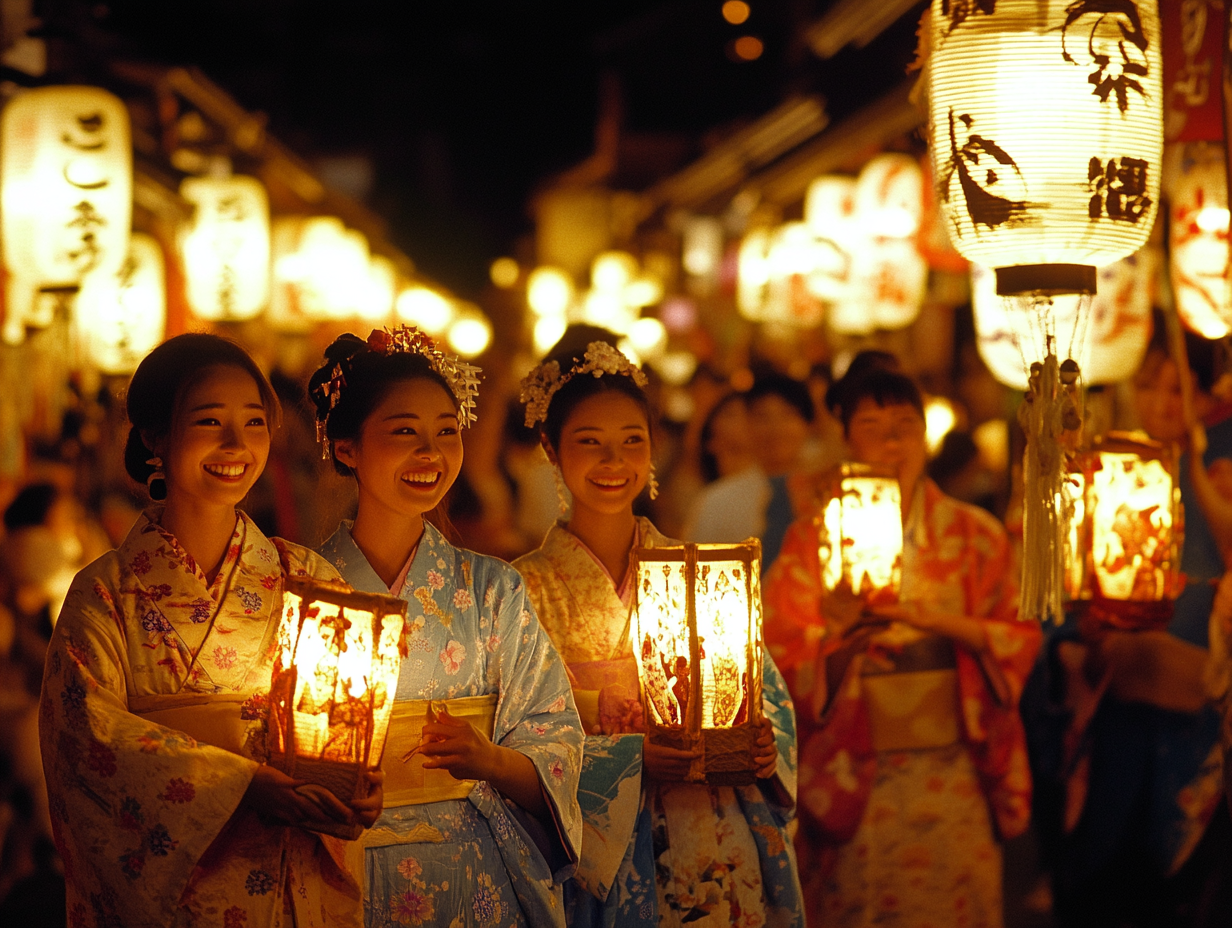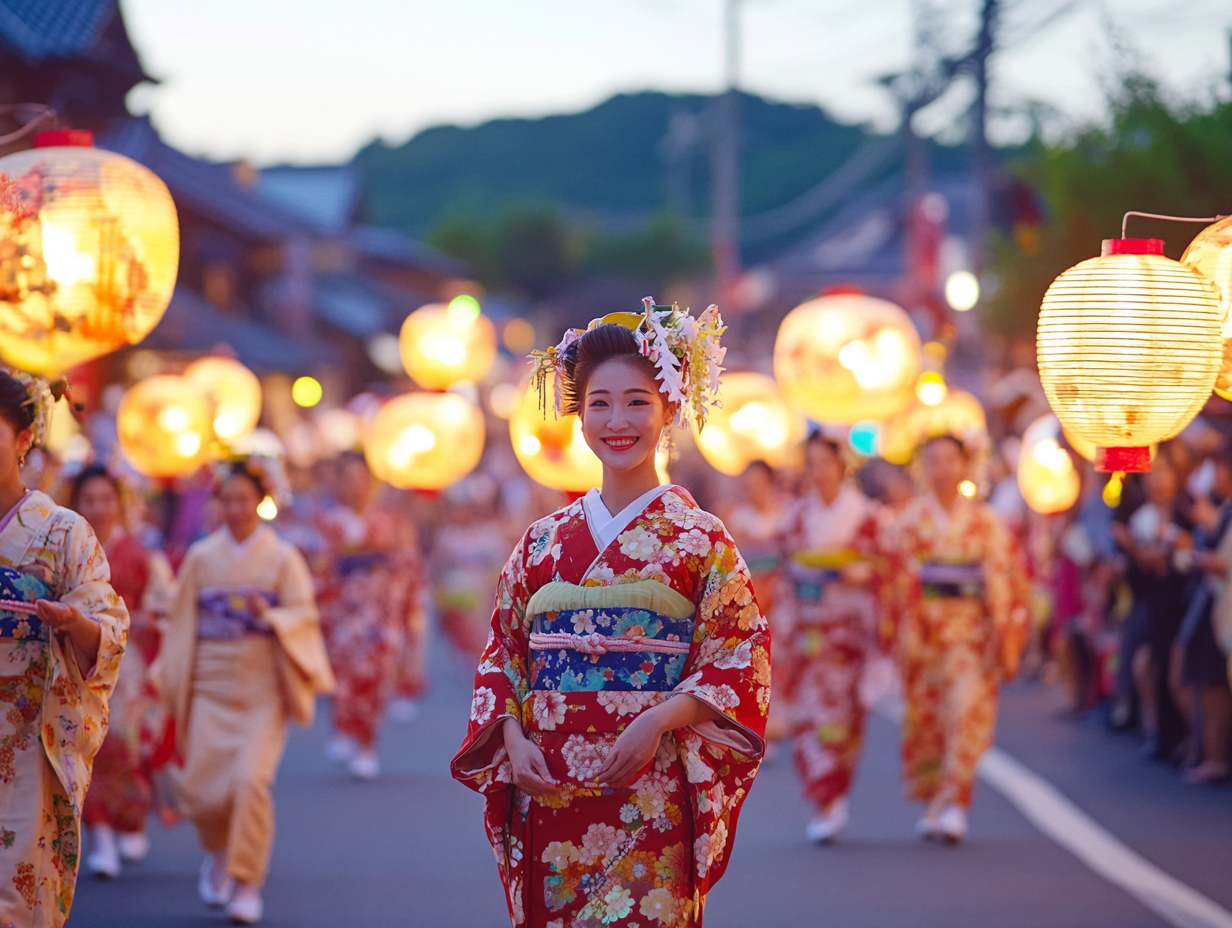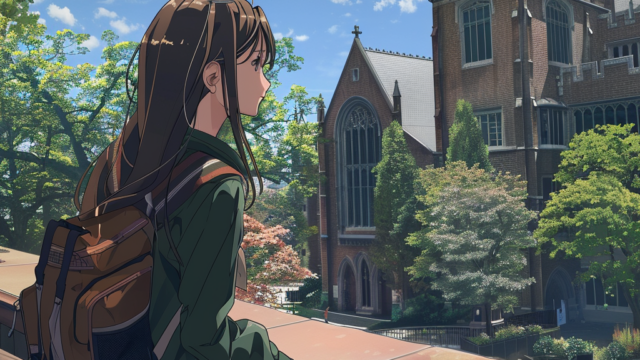
Obon: Japan’s Festival of Souls
Obon, one of Japan’s most important holidays, is a time when the spirits of ancestors are believed to return to the world of the living. This fascinating festival, rich in history and tradition, offers a unique glimpse into Japanese culture and spirituality.
お盆:日本の魂の祭り
お盆は日本の最も重要な祝日の一つで、先祖の霊が生者の世界に戻ってくると信じられている時期です。この魅力的な祭りは、歴史と伝統に富み、日本の文化と精神性を垣間見ることができます。
Origins and History
The origins of Obon can be traced back to an ancient Buddhist custom. According to legend, a disciple of Buddha named Mokuren discovered his deceased mother suffering in the Realm of Hungry Ghosts. Following Buddha’s advice, Mokuren made offerings to Buddhist monks, which led to his mother’s release. Overjoyed, Mokuren danced with happiness, giving birth to the Bon Odori dance that is now a central part of Obon celebrations.
起源と歴史
お盆の起源は古代仏教の習慣にさかのぼります。伝説によると、目連という仏陀の弟子が、亡くなった母が餓鬼道で苦しんでいるのを発見しました。仏陀の助言に従い、目連は僧侶たちに供養をし、それによって母が解放されました。喜びのあまり目連は踊り出し、これが現在のお盆の中心的な行事である盆踊りの起源となりました。
When is Obon Celebrated?
Traditionally, Obon was observed according to the lunar calendar. However, after Japan adopted the Gregorian calendar in 1873, the dates for Obon became more varied across the country. Today, most regions in Japan celebrate Obon from August 13th to 16th, although some areas still observe it in July or follow the lunar calendar.
お盆はいつ祝われるか
伝統的に、お盆は旧暦に従って観察されていました。しかし、1873年に日本がグレゴリオ暦を採用した後、お盆の日付は全国でさまざまになりました。今日、日本のほとんどの地域では8月13日から16日にお盆を祝いますが、7月に行う地域や旧暦に従う地域もあります。
Obon Traditions
During Obon, families engage in various customs to honor their ancestors:
- Mukae-bon: On the first day, people light lanterns to guide their ancestors’ spirits home.
- Obon dances: Communities gather for Bon Odori, traditional dances performed to the rhythms of taiko drums.
- Grave visits: Families clean and decorate their ancestors’ graves.
- Food offerings: Special dishes are prepared and offered at home altars and temples.
- Toro Nagashi: On the final day, floating lanterns are released into rivers and seas to guide the spirits back to their world.
お盆の伝統
お盆の期間中、家族は先祖を敬うためにさまざまな習慣を行います:
- 迎え盆:初日に、人々は先祖の霊を家に導くためにランタンを灯します。
- 盆踊り:コミュニティが集まり、太鼓のリズムに合わせて伝統的な踊りを踊ります。
- 墓参り:家族が先祖の墓を掃除し、飾り付けます。
- 供物:特別な料理が用意され、家の仏壇や寺院に供えられます。
- 灯籠流し:最終日に、先祖の霊を元の世界に導くため、川や海に灯籠を流します。

Regional Variations
Obon celebrations vary across Japan, adding to the festival’s charm:
- In Kyoto, the famous Gozan no Okuribi (Five Mountain Bonfires) event features giant bonfires lit on mountainsides, forming kanji characters and other shapes.
- In Tokushima Prefecture, the Awa Odori festival showcases a unique and energetic dance style.
- In Okinawa, Obon is marked by the “Eisa” dance, performed to honor ancestors with rhythmic movements and drum beats.
地域による違い
お盆の祝い方は日本各地で異なり、祭りの魅力を高めています:
- 京都では、有名な五山送り火(五山の送り火)が行われ、山腹に巨大な火文字や形が描かれます。
- 徳島県では、阿波踊りという独特で活気のある踊りが披露されます。
- 沖縄では、リズミカルな動きと太鼓の音で先祖を敬う「エイサー」という踊りでお盆を祝います。
Modern Obon
While maintaining its spiritual significance, Obon has also become one of Japan’s major holiday seasons. Many Japanese people take time off work to return to their hometowns, making it one of the busiest travel periods in the country.In 2024, the peak of the Obon travel season is expected to occur between August 10th and 18th. With the right planning, this could result in a maximum nine-day holiday for many workers.
現代のお盆
精神的な意義を保ちつつ、お盆は日本の主要な休暇シーズンの一つにもなっています。多くの日本人が仕事を休んで故郷に帰るため、国内で最も旅行が混雑する時期の一つとなっています。2024年のお盆の旅行ピークシーズンは8月10日から18日の間と予想されています。うまく計画を立てれば、多くの労働者にとって最大9日間の休暇になる可能性があります。

Obon Beyond Japan
Interestingly, Obon is not limited to Japan. Japanese communities in countries like Brazil, Argentina, and the Philippines also celebrate this festival, often incorporating local cultural elements.
日本以外のお盆
興味深いことに、お盆は日本に限らず、ブラジル、アルゼンチン、フィリピンなどの日系コミュニティでも祝われており、しばしば現地の文化要素を取り入れています。
Trivia
- The word “Obon” comes from the Sanskrit term “Ullambana,” which means “to hang upside down” – a reference to the suffering of spirits in the afterlife.
- In some regions, people make “spirit animals” from vegetables: horses from cucumbers to carry ancestors swiftly, and cows from eggplants for a slow return journey.
- The famous Japanese song “Tankō Bushi” is often played during Bon Odori dances.
トリビア
- 「お盆」という言葉はサンスクリット語の「ウランバナ」に由来し、「逆さまにぶら下がる」という意味で、来世での霊の苦しみを指しています。
- 一部の地域では、野菜で「精霊動物」を作ります:キュウリで馬を作って先祖を素早く運び、ナスで牛を作ってゆっくりと帰る旅を表現します。
- 有名な日本の歌「炭坑節」は、盆踊りの際によく演奏されます。
外国人にお盆を英語で説明しよう!
Obon is a major Japanese holiday celebrated in mid-August. It’s a time when people honor their ancestors’ spirits. Many Japanese return to their hometowns to visit family graves, clean them, and offer food and flowers. Families often gather for special meals and to welcome the spirits home.
You might see beautiful lantern festivals or traditional Bon dances in yukata (light summer kimono). Some areas float lanterns on rivers or light bonfires on mountains to guide spirits.
During Obon, you can witness unique customs like “Obon-mukae,” where people prepare special food offerings for ancestors. Many households set up a small altar called “butsudan” to welcome spirits. The festival concludes with “Okuribon,” where people send off the spirits, often by floating lanterns on water or releasing them into the sky. These rituals offer a fascinating glimpse into Japanese spiritual beliefs and family traditions.
【日本語訳】
お盆は8月中旬に祝われる日本の主要な祝日です。先祖の霊を敬う時期です。多くの日本人が故郷に帰り、家族のお墓を訪れ、掃除し、食べ物や花を供えます。家族が集まって特別な食事をし、先祖の霊を家に迎えることも多いです。
美しい提灯祭りや、浴衣を着て行う伝統的な盆踊りを見かけるかもしれません。地域によっては、川に灯篭を流したり、山に篝火を焚いたりして、霊を導きます。
お盆の期間中、先祖のために特別な食べ物を用意する「お盆迎え」のような独特な習慣を目にすることができます。多くの家庭では、霊を迎えるために「仏壇」と呼ばれる小さな祭壇を設けます。祭りは「送り盆」で締めくくられ、人々は霊を送り出します。多くの場合、灯篭を水に流したり、空に放したりします。これらの儀式は、日本の精神的信仰と家族の伝統について興味深い一面を垣間見ることができます。






